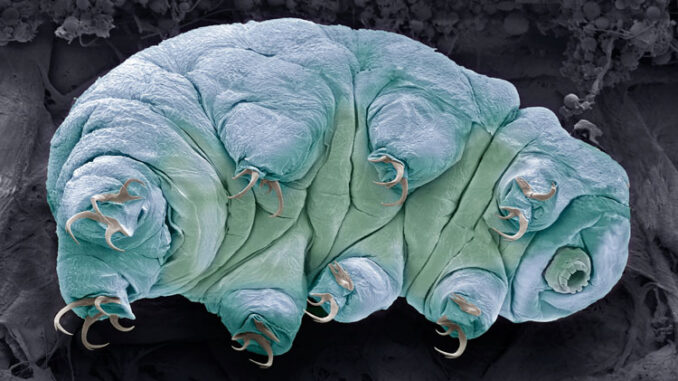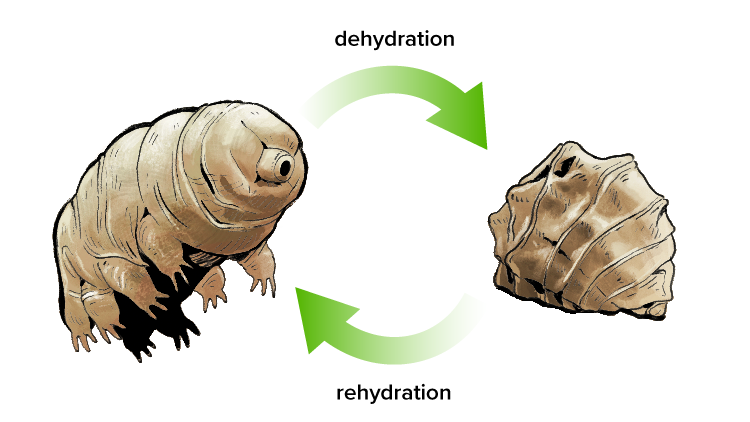
Often called “water bears,” tardigrades are microscopic invertebrates [animals without backbones] with a real-life superpower. These tiny creatures are nearly indestructible.
Tardigrades live in both water and land environments. They are considered aquatic because they need a thin layer of water to be active. Terrestrial tardigrades live in moist environments, such as on mosses and leaf litter. Tardigrades have been found across the globe, from the Arctic to the tropics. They have been found in the deepest oceans and on the highest trees.
Unlike many other microscopic aquatic animals, tardigrades move slowly. In fact, their name means “slow walker” in Latin. They use their eight stubby legs to climb over debris.
Tardigrades are known for their ability to survive extreme conditions. If the environment of a tardigrade becomes stressful, such as during a drought, the tardigrade squeezes most of the water out of its body. It shrivels up, rolls into a ball, and enters a state called cryptobiosis. The dried-out tardigrade is known as a tun. In this state, the organism is dormant [inactive], but it can be brought back to active life when conditions improve.

As a tun, a tardigrade can survive temperatures far below freezing and above boiling, pressures greater than the deep sea, and high concentrations of toxic gases. Tuns can even survive in the vacuum of space. Researchers have subjected tuns to these conditions and successfully brought them back to active life. Scientists call tardigrades extremophiles due to their ability to survive extreme conditions. Scientists believe this ability has allowed tardigrades to survive events throughout Earth’s history that have caused most other organisms to go extinct.
What Do You Think? How is cryptobiosis like a superpower?
Photo Credit: (t)STEVE GSCHMEISSNER/SCIENCE PHOTO LIBRARY/Getty Images, (b)McGraw Hill Education



